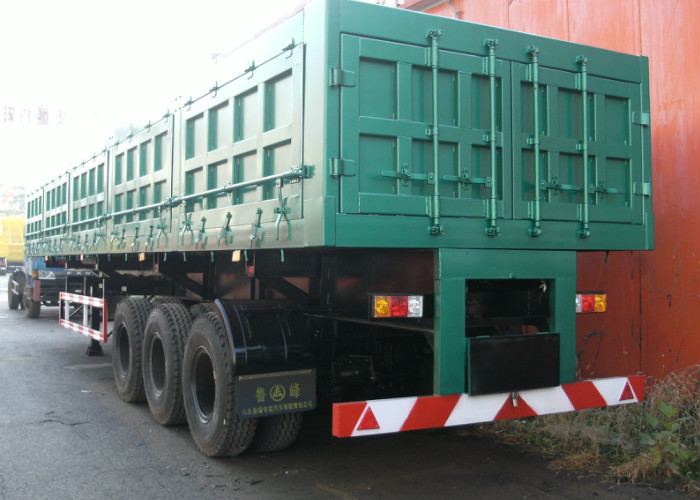The GA axial length of fire trucks is a vital specification that can influence the vehicle’s performance, maneuverability, and suitability for diverse firefighting scenarios. In this article, we will delve into every facet of the GA axial length from its definition to its implications, providing valuable insights for firefighters, departments, and industry enthusiasts. With a structured approach and practical examples, we aim to furnish you with a thorough understanding of this critical measurement in fire truck design and use.
What is GA Axial Length?
The GA axial length, or overall axial length, of a fire truck refers to the distance between the front and rear axles of the vehicle. This measurement is crucial for understanding how a fire truck will handle on different terrains and through various environments.
Why is GA Axial Length Important?
The GA axial length impacts several operational aspects of a fire truck:
- Maneuverability: A shorter axial length often means a vehicle can make tighter turns, which is essential in urban firefighting scenarios.
- Stability: Longer axial lengths typically offer greater stability, especially when carrying heavy equipment or navigating uneven surfaces.
- Weight Distribution: The axial length influences how weight is distributed across the fire truck, affecting performance and safety.
How is GA Axial Length Measured?
Measuring the GA axial length of fire trucks requires precise calculations and tools. The measurement typically involves finding the distance between the center points of the front and rear axles.
Tools Required for Measurement
- Tape measure or measuring wheel
- Reference markers (chalk or paint)
- Level surface for accurate measurement
Step-by-Step Measurement Process
- Ensure the fire truck is parked on a level surface.
- Identify the center point of the front axle.
- Identify the center point of the rear axle.
- Use the tape measure to calculate the distance between the two points.
- Record the measurement for reference.
Types of Fire Trucks and Their GA Axial Length
Different types of fire trucks are designed for various applications, and their axial lengths can vary significantly.
1. Pumper Trucks
Pumper trucks, commonly used for firefighting, typically feature a GA axial length of between 18 to 25 feet, depending on the model and manufacturer.
2. Ladder Trucks
Ladder trucks, designed to reach high places, generally have a longer axial length, ranging from 25 to 30 feet. This offers better stability when extending ladders for high-rise fires.
3. Tanker Trucks
Tanker trucks used for transporting water can also have considerable variations in length, usually between 20 and 26 feet, based on their load capacity.
4. Rescue Trucks
Rescue trucks, intended for emergencies beyond fire situations, have more compact designs, with axial lengths ranging from 18 to 24 feet.
Impact of GA Axial Length on Firefighting Operations
The GA axial length significantly impacts how effectively a fire truck can respond to emergencies. Various operational factors to consider include:
Maneuvering in Narrow Areas
In urban settings, particularly narrow streets, a fire truck with a shorter axial length can effectively navigate tight corners and alleyways, ensuring fast response times.
Stability During Operations
A longer GA axial length provides better stability, especially when the truck is parked on inclines or uneven surfaces. This feature is crucial when firefighters need to rely on the truck for elevated operations.
Choosing the Right Fire Truck Based on GA Axial Length
When selecting a fire truck, the GA axial length should be a critical factor. Here are practical tips:
1. Assess the Environment
Consider the types of environments the fire truck will navigate. Urban areas require greater maneuverability, while rural locations may place less stress on axial length.
2. Evaluate Equipment Needs
Your department’s needs for equipment storage and firefighting capabilities can dictate the best axial length range.
3. Manufacturer Guidelines
Always refer to the manufacturer’s specifications and recommendations based on the intended use of the fire truck.
4. Consult with Firefighters
Engage with active firefighters to understand firsthand their experiences and insights regarding the performance of various fire truck models.
Practical Examples of Fire Truck Selection
| Department Type | Typical Environment | Recommended Axial Length |
|---|---|---|
| Urban Fire Department | Narrow streets and alleys | 18-22 feet |
| Rural Fire Department | Open roads and fields | 22-28 feet |
| Industrial Fire Department | Large facilities and complex layouts | 24-30 feet |
Future Trends in Fire Truck Design Related to GA Axial Length
As technology and firefighting methods evolve, so too will the design and engineering of fire trucks. Expectations include:
Increased Compact Designs
Manufacturers are exploring more compact designs to enhance urban maneuverability without sacrificing essential equipment capacity.
Advanced Stability Features
Innovations in suspension systems may allow for enhanced stability on longer vehicles, making them more suitable for various environments.
Conclusion
FAQs About GA Axial Length of Fire Trucks
1. What is considered a standard GA axial length for fire trucks?
The standard GA axial length for fire trucks typically ranges between 18 to 30 feet, depending on the type and the specific design requirements.
2. How does GA axial length affect firefighting performance?
A fire truck’s axial length directly impacts its maneuverability, stability, and overall handling during firefighting operations.
3. Can GA axial length be modified during customization?
While modifications can be made, altering the axial length can have serious implications on the truck’s design and performance, often requiring engineering assessments.
4. Does a longer GA axial length mean a safer fire truck?
Generally, a longer axial length contributes to greater stability, which can enhance safety. However, it may also reduce maneuverability in tight spaces.
5. Are there specific GA axial length regulations?
Yes, fire truck designs must comply with local regulations and standards set by firefighting authorities, which can specify minimum or maximum axial lengths.
6. How can I find the GA axial length of a specific fire truck model?
Refer to the manufacturer’s specifications or consult the vehicle’s service manual to find the precise GA axial length for specific models.





